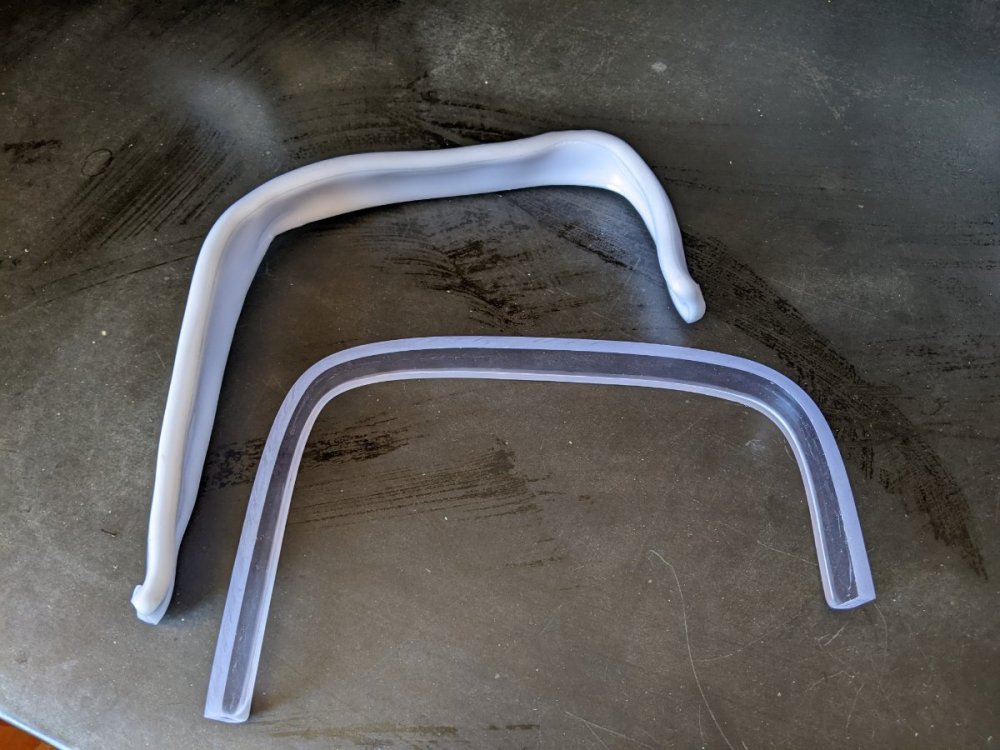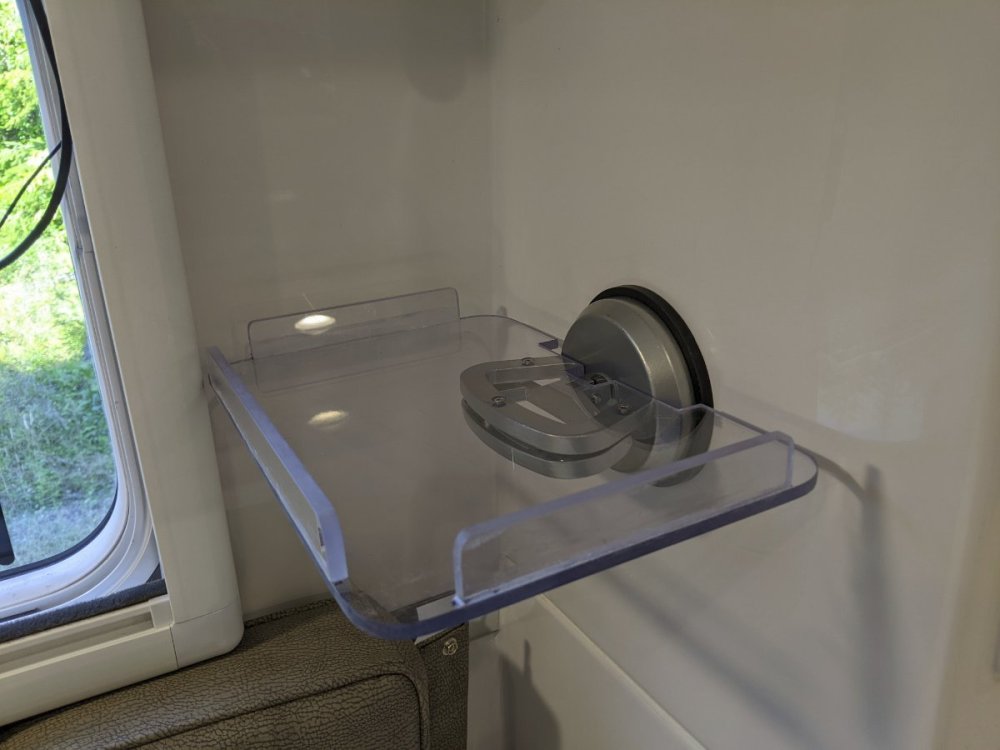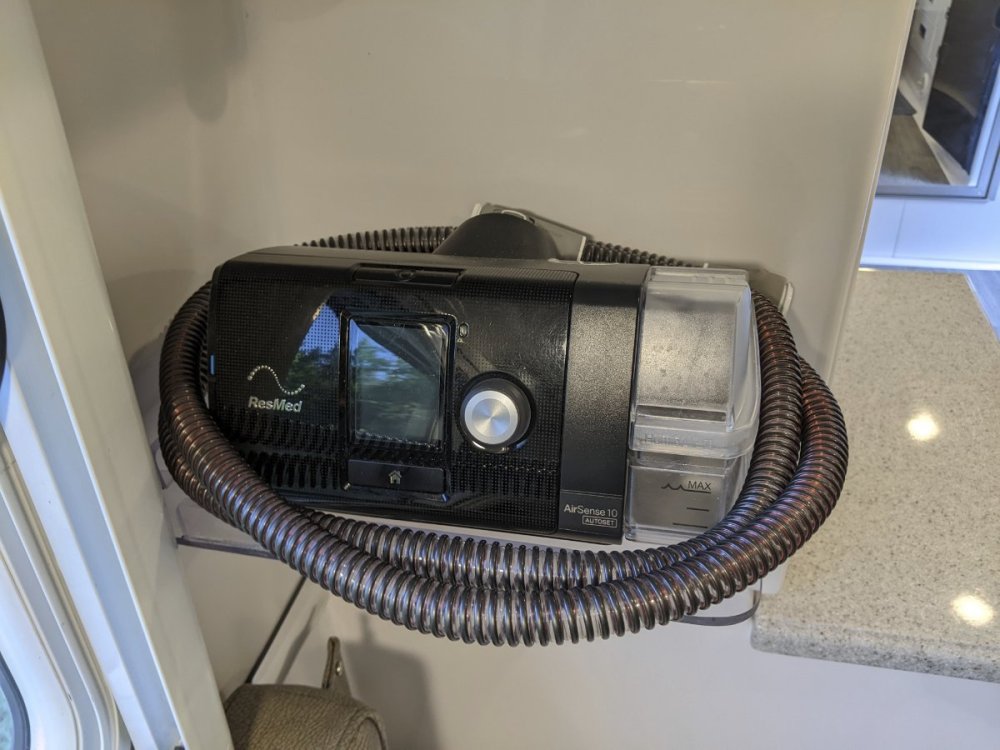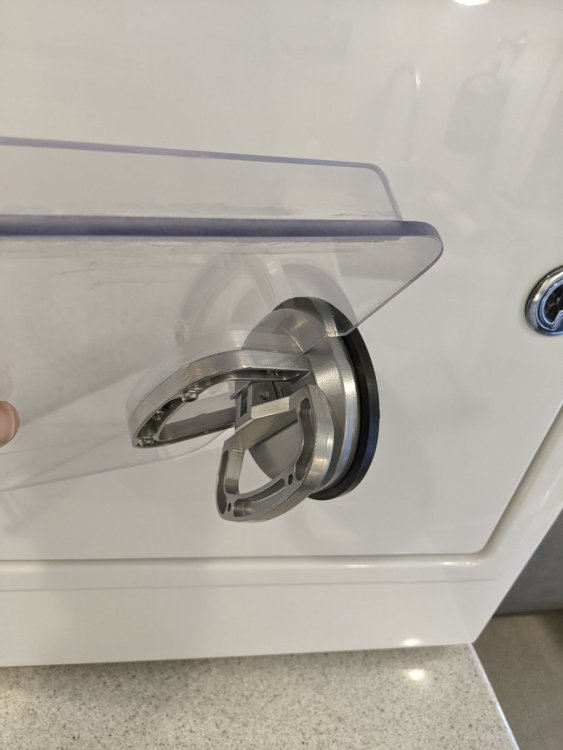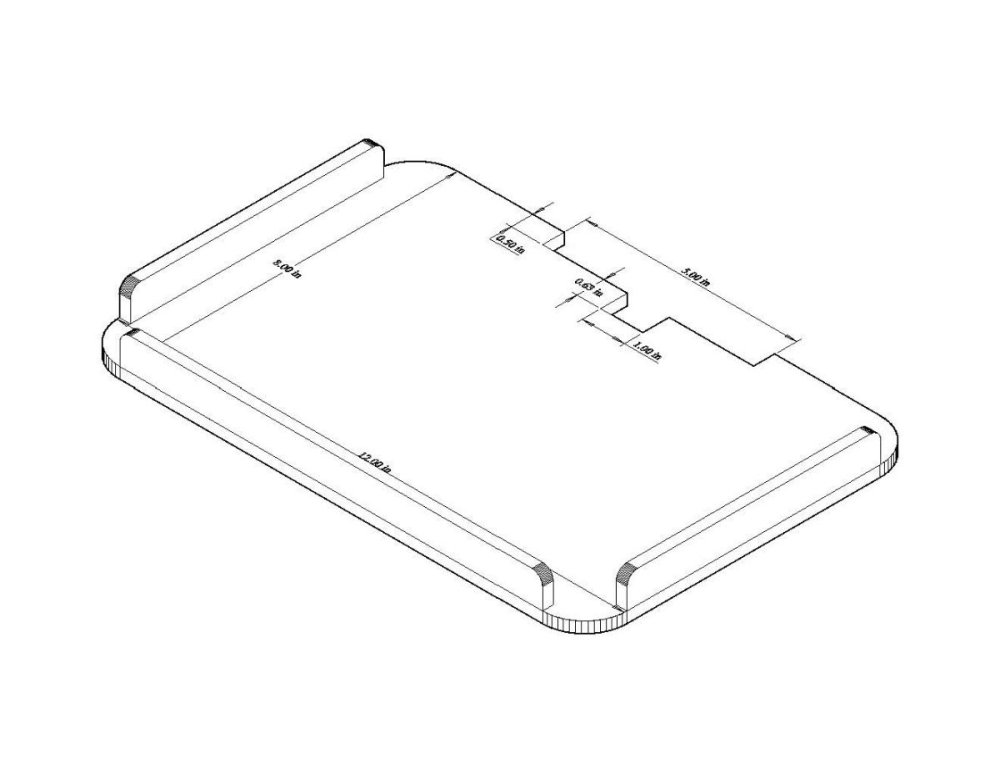-
Posts
8 -
Joined
-
Last visited
My Info
-
Gender or Couple
Couple
My RV or Travel Trailer
-
Do you own an Oliver Travel Trailer, other travel trailer or none?
I own an Oliver Travel Trailer
-
Hull #
1061
-
Year
2022
-
Make
Oliver
-
Model
Legacy Elite II
-
Floor Plan
Standard Floor Plan
Recent Profile Visitors
The recent visitors block is disabled and is not being shown to other users.
Wildbrew's Achievements
-
Apparently my installation offends some people’s sense of aesthetics but I had solid reasons for choosing the components that I did. After 2 years and many thousands of miles, I’m still very happy with the results. We continue to have very usable internet access in places where other people struggle to find one bar on their phones. In fact, when we’re at home, I run an Ethernet cable from the Oliver into the house and use the Pepwave router to supplement the marginal DSL service available in our area. (The 5G is much faster, especially on upload speeds than the DSL, I just have to be mindful of the data limits of the two cellular plans that we have). Oh, and no leaks despite NOT using two tubes of dicor… 😉
-
-
Yes, the 1" bulkhead fitting works fine for all 7 wires. You may need to stagger the connectors as you're pulling them through since they are wider than the cables but once they are through, they fit fine. (you can always practice with the fitting before you drill the hole! 🙂) The bulkhead fitting also has an advantage over just a pvc pipe as the flanges and nut, along with the included rubber gaskets, are easier to seal and actually helps anchor the junction box to the roof. I think getting the antenna base plane above the air conditioner is more important than horizontal separation. I fabricated my mount so the base of the antenna is just proud of the air conditioner and only adding a little bit to the overall height of the Oliver. Keeping the antenna wire lengths as short as possible also make a big difference on performance. Anyway, it sounds like you're on the right path with your installation. I hope all goes well!
-
Hi Steve, Yes, I've been busy with other things and haven't been on the forum for a while but I did get your PM. The box itself is just a PVC junction box from Home Depot. For the penetration through the box and into the attic, I used a marine bulkhead fitting from Amazon. https://www.amazon.com/gp/product/B0002DKAKA/ref=ppx_yo_dt_b_asin_title_o09_s00?ie=UTF8&psc=1 . For the antenna wire entrances, I used a cable entry system from Automation Direct (a great company that I use quite a lot) https://www.automationdirect.com/adc/shopping/catalog/wiring_solutions/cable_entry_systems/frames/bpa-s-10-2-0 You buy the frame and then the individual inserts separately in the size that you need for your wires. I see that the particular one I used is currently back ordered but they have other similar ones in stock. I used a lot of sealant / calk around the penetration and box and haven't had any issues with leaks. As a side note, I'm still really happy with the Pepwave system. It's faster than the DSL service I am able to get at my house. In fact it works so well, I have an ethernet cable run from the Oliver into the house to supplement the DSL when when we're home. (although I do have to watch to make sure we don't exceed the data limits of the cellular plans) I hope this helps and good luck with you installation!
-
The CPAP machine isn't very heavy, probably only 2-3 lbs but the shelf could support quite a bit more weight. I do leave the shelf attached and so far it's stayed put. I like the idea of an outside beer shelf! 😃 I chose polycarbonate over acrylic plexiglass because it is much stronger and won't crack. However, using polycarbonate did offer a few unique challenges that I hadn't anticipated... My original design had a curved ledge running all around the shelf which I had planned to heat and bend around the shelf. I've done similar bends with acrylic without much problem. I researched bending polycarbonate and the suggestion for doing so at home was to heat the piece you intend to bend in an oven: https://www.justpolycarbonate.com/post/bending-polycarbonate-everything-you-need-to-know When I went to actually do it, I quickly learned that heating and bending polycarbonate is much trickier then bending acrylic. Polycarbonate has to be heated to a much higher temperature (around 400 F). You have to watch it closely because if you heat it for even 30 seconds after it becomes flexible, it transforms into an almost unrecognizable opaque white material! (see photo). Even when you catch it at the perfect time, you only have a few seconds to bend the material before it hardens up again. After a few failed attempts, I gave up and redesigned the shelf with straight ledges! I bought a 12"x24"x1/4" sheet of polycarbonate on Amazon but if you live close to a plastics dealer such as TAP Plastics, you can often find remnant pieces in their bargain bins. Polycarbonate (and acrylic) are typically solvent welded when attaching pieces together. This was the product I used: https://www.amazon.com/gp/product/B003HNFLMY/ref=ppx_yo_dt_b_asin_title_o03_s00?ie=UTF8&psc=1
-
Wildbrew started following Pepwave Cellular Router Installation and Suction Cup Shelf
-
Inspired by dhaig's use of a Harbor Freight suction cup to make an external towel rack, I decided to use another Harbor Freight suction cup, https://www.harborfreight.com/4-58-in-aluminum-suction-cup-lifter-110-lb-57500.html, to make an interior shelf. I fabricated the shelf out of a 1/4" sheet of polycarbonate. I'm using the shelf to hold a CPAP machine on the back side of the pantry cabinet of our standard bed Elite 2 but the suction cup shelf could be adapted to a number of different applications depending on a person's need. The suction cup is rated for 110 Lbs. Of course this is a straight line pull and not side loaded like it is in this shelf application, but that said, the shelf is quite secure and can support quite a bit of weight.
- 6 replies
-
- 14
-

-

-

-
The antenna dome actually has 7 separate antennas in it with 7 corresponding cables that have to enter the Oliver somewhere. The gray box is just a junction box that I fed the 7 wires into through the pictured cable gland fitting. Inside the junction box I have a marine thru hull fitting that goes through the Oliver's roof and into the cabinet that all 7 wires run through. My reason for doing it this way is that I expect the Oliver to outlast the technology attached to it and I wanted to future proof as much as possible by allowing for upgrades without further modifications to the Oliver hull. The cable gland fitting is similar to ones we successfully used on the ship in harsher conditions than I expect to encounter with the Oliver. As for the mount, it's fabricated out of 1/8" aluminum plate. When bolted down, it's actually very rigid and sturdy. When designing the mount, I considered putting some bracing on it but decided not to. It would take a lot more than a bird strike to bend the mount. That said, if hit hard enough, something will give. I would rather the antenna mount gave than the fiberglass it's bolted to.... I didn't want a flagpole or any kind of retractable mast that had to be put up each time its used as we also use the router while driving. The SIM cards are on the back of the router and would be impossible to access with the router in place. The wing nuts make it easy to take the router down for access as needed and also leave the option of removing the router and using it in the home if we want. (We live in a rural area and home internet options are not always the best or most reliable) The antenna dome does have a built in ground plane so an external one is not required but I figured the flat aluminum mount can't hurt! 🙂
-
I recently installed a Pepwave MAX BR1 Pro 5G cellular router on our Oliver. It was part of the ‘Speed Demon 5G Mobile Internet Bundle’ that we purchased from Mobile Must Have. We’re just completing our first trip with it from Washington State to Minnesota and back. So far, we’re very happy with its performance. This is a fairly expensive setup and definitely not for everyone (or the faint of heart with required hole drilling in the Oliver roof!) However for us, with my wife’s need for a high speed and consistent connection to the internet for her work, it makes the difference between being able to travel or staying at home. On this trip we spent 2 nights in a campground in North Dakota where my regular cellphone kept alternating between 1 bar and no service. Using the Pepwave, my wife was able to work and have conference calls on both Zoom and Teams without any problem. The Wi-Fi also works while driving. Until my recent retirement, I was captain on a ship that had both Cradlepoint and Pepwave equipment onboard. Both companies make very good, professional grade equipment. There were two reasons I went with the Pepwave over the Cradlepoint option that Oliver offers: 1) Cradlepoint no longer seems interested in supporting individual users. Their focus seems to be almost exclusively geared toward enterprise solutions. 2) I wanted a router that was capable of utilizing 5G as it’s now being rolled out around the country. The Cradlepoint option offered by Oliver does not have 5G capabilities. The MAX BR1 Pro 5G accepts two SIM cards so we have a Verizon as our main data plan and a T-Mobile card as a backup. The sloped area behind the air conditioner seemed like the only place I could go through the roof with the antenna wires and mount and have a clean installation in the upper back cabinet. Because the antenna works best if it is above any metal obstructions, I fabricated the mount so it was just proud of the air conditioner and adding as little additional overall height as possible.



